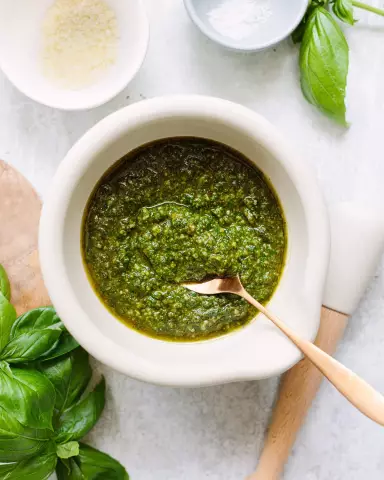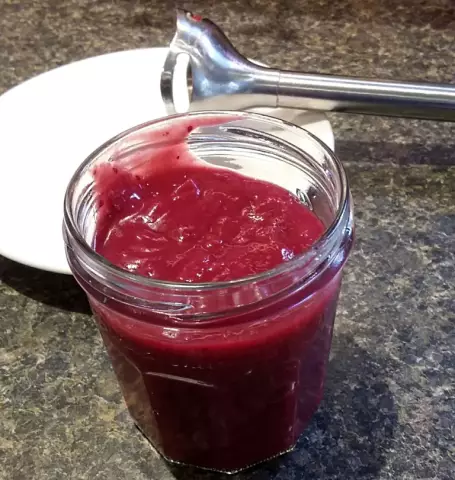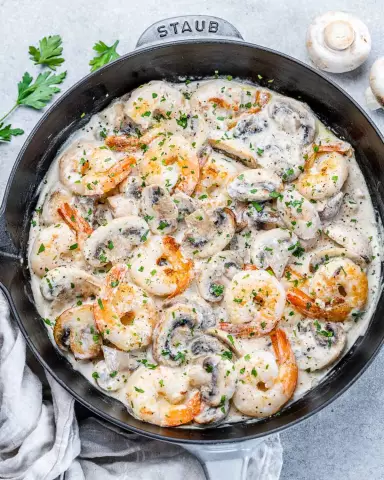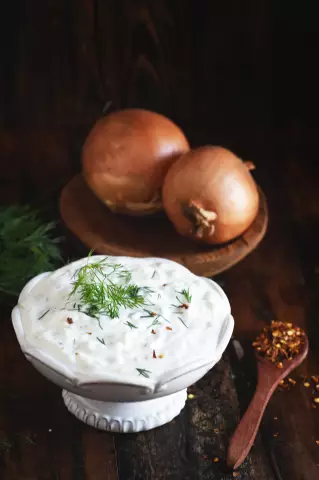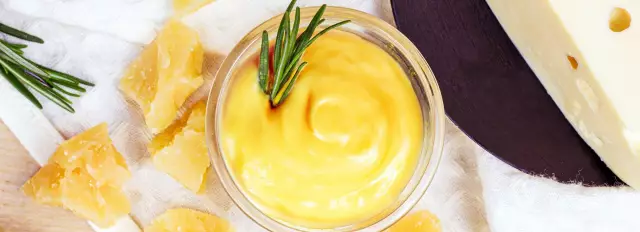- Author Rachel Wainwright [email protected].
- Public 2023-12-15 07:39.
- Last modified 2025-11-02 20:14.
Pesto

Pesto is a classic Italian sauce. For the first time, the sauce was prepared in the northern part of Italy, in the Liguria region. The inhabitants of Italy were so impressed with pesto that they even hosted the world championship for the preparation of the famous sauce. Both professional chefs and amateur cooks took part in the championship.
The name pesto comes from the words "pestato", "pestare", which translated from Italian means "trample, crush, grind." In France, this sauce is prepared in Provence and is called "piste". In Germany, wild garlic is added to the sauce instead of basil, and in Austria it is made from pumpkin seeds ("pumpkin pesto").
The classic pesto sauce is prepared exclusively in a porcelain or marble mortar, and its main ingredients are ground by hand with a wooden pestle.
Nutritional Information for Pesto Sauce
One hundred grams of the classic recipe sauce contains 4.5 mg of vitamin PP, 1.4 mg of vitamin B12, 0.3 mg of vitamin E, 2.8 mg of vitamin C, 19 μg of vitamin B9, 0.4 mg of vitamin A Pesto contains phosphorus (540 mg), potassium (100 mg), sodium (860 mg), magnesium (50 mg), calcium (1005 mg), manganese (0.1 mg), copper (70 μg) and zinc (4 mg).
Pesto Sauce Recipes
The most common pesto recipe includes pine nuts, garlic, green basil, parmesan, and olive oil. In some regions of Italy, dried or fresh tomatoes are added to it, and hard parmesan is supplemented with sheep's cheese. There are recipes for pesto without using pine nuts, or recipes where pine nuts are replaced with almonds. In addition to the classic ingredients, spinach, arugula, dill, peanut or walnut are added to this sauce. A true pesto sauce is impossible without the indispensable and indispensable product - cold-pressed olive oil.
Classic pesto recipe
Place four bunches of basil leaves in a mortar. Add a pinch of salt (to preserve the color of the sauce), two to three cloves of garlic, and one dessert spoon of pine nuts or pine nuts. Then you should grind the added ingredients first at a very slow pace, and then, gradually increasing the speed, add a mixture of Parmesan, pecorino and grated cheese (three dessert spoons each). When the mixture becomes creamy and smooth, add two hundred grams of olive oil in a thin stream. Next, you need to mix the sauce very thoroughly. For a sour taste, you can add one to two tablespoons of lemon juice to the pesto.

The pesto sauce is kept in the refrigerator. To keep the prepared sauce for a long time, it is necessary to pour olive oil on its surface. This will protect the pesto components from air ingress and extend its shelf life.
Applying pesto sauce
A wide variety of dishes are seasoned with sauce. Pesto sauce can be added to pasta, spread on bread, and vegetables can be dipped in it. Fillets of cod or salmon are greased with pesto sauce and baked in the oven until tender. With pesto, fish fillet turns out to be spicy and very delicate in taste.
This sauce is added to any salad instead of vegetable oil and mayonnaise. Pesto is an excellent addition to baked or roasted meats. Often used as a marinade, grilled lamb will be juicy and tender if smeared with pesto before frying. Vegetable pesto pairs best with bell peppers and eggplant, especially tomato pesto. In Italy, sauce is applied to each layer of a traditional Italian layered cake.
Pesto is also used in sandwich cakes and sandwiches, as well as ham, cheese and tomato pizzas. Pesto is a great substitute for traditional tomato pizza sauce.
The prepared sauce is sold in stores in small glass jars. But, of course, freshly made sauce has a richer taste and aroma.
Found a mistake in the text? Select it and press Ctrl + Enter.

